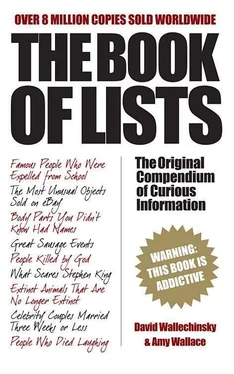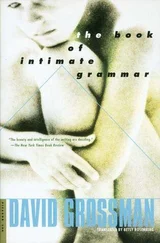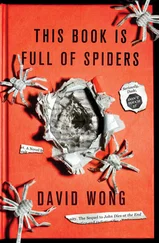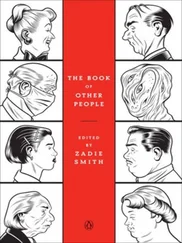THE WEDDING OF THE PRINCE REGENT (1795)
The Prince Regent, later George IV, was markedly unwilling to make the dynastic marriage expected of the heir to the throne, not least because he was already secretly married to a Roman Catholic commoner, Mrs Fitzherbert. Pressured by his father, George III, the prince agreed to marry Princess Caroline of Brunswick. Meeting his bride three days before the wedding, he was horrified by the prospect of them becoming man and wife and took refuge in drink. At the ceremony he was so drunk he could hardly stand up and had to be supported by his groomsmen. He came to life only to make eyes at his current mistress, Lady Jersey, who was one of the wedding guests. George continued to drink after the vows had been exchanged and spent his wedding night collapsed in a drunken stupor in the fireplace of his new wife’s bedroom. The couple spent only a few nights together — on one of which George’s heir Princess Charlotte was conceived — and separated within the year.
NAT TURNER REBELLION (1831)
On the night of August 21, 1831, black slave-prophet Nat Turner launched a rebellion in Southampton County, Virginia, that left more than 50 whites and more than 120 blacks dead. Although Turner never touched alcohol, his six followers had feasted on roast pig and apple brandy that night. At the first plantation they attacked, the rebels drank hard cider before massacring the whites living there. Through the night and into the next day, the insurgents raided plantations, killed whites and confiscated horses, weapons and brandy. By noon, Turner’s army had expanded to approximately 60 men, but many of them were so intoxicated that they kept falling off their horses. When Turner caught up with one advance party, they were relaxing in the brandy cellar of a plantation. Learning that a group of whites was approaching, Turner rallied his men and put the whites to the fight. But the next day an alarm scattered his new recruits, and he had only 20 men left to fight 3,000 armed white militiamen and volunteers. The rebellion was crushed.
LINCOLN’S ASSASSINATION (1865)
On April 14, 1865, actor John Wilkes Booth began drinking at the Kirkwood House bar in Washington, DC, at three in the afternoon. At 4 pm he arrived at Deery’s saloon and ordered a bottle of brandy. Two hours later he was drinking whisky at Taltavul’s Saloon, next door to Ford’s Theater. Having made the final arrangements for his impending crime, Booth returned at 9.30 to Taltavul’s, where President Abraham Lincoln’s valet, Charles Forbes, his coachman Francis Burns, and his bodyguard John Parker, an alcoholic policeman, were all drinking. At 10.15, while Parker continued to imbibe — thus leaving the president unprotected — Booth left, went next door to Ford’s Theater, and shot Lincoln. Meanwhile, George Atzerodt, Booth’s fellow conspirator, who was supposed to assassinate Vice President Andrew Johnson, had become so intoxicated and frightened that he abandoned the plan.
BATTLE OF THE LITTLE BIGHORN (1876)
A controversy still rages over the extent and level of intoxication of the officers and men of the US 7th Cavalry Regiment at the Battle of the Little Bighorn. It is known that Custer’s second-in-command, Major Marcus Reno, had a half-gallon keg of whisky with him on the expedition. When they reached the Rosebud River four days before the battle, the 7th Cavalry troopers may have replenished their supplies of alcohol off a steamboat carrying cases of whisky. According to Indian veterans of the battle, numerous canteens half full of whisky were found with the bodies of Custer’s men. It is a fact that Reno, who was most likely an alcoholic, was intoxicated when besieged by Indians the night after Custer was defeated.
THIRD BATTLE OF THE AISNE RIVER (1918)
In May 1918, during WWI, General Erich Ludendorff’s German troops reached the Marne River at Château-Thierry, only 37 miles from Paris, during the Third Battle of the Aisne River. On the verge of capturing Paris, but after living without any luxuries for years, the German soldiers invaded France’s champagne provinces, where well-stocked wine cellars abounded. Drunkenness quickly spread through the ranks; even the German military police joined the revelries. In the village of Fismes on the morning of May 30, the bodies of soldiers who had passed out littered the streets, making it difficult for trucks to drive through the town on their way to the front lines. The intoxication and subsequent hangovers afflicting the Germans slowed their advance and halted it completely in certain sectors. This enabled the French and Americans to establish new defensive lines, counterattack, and end Ludendorff’s offensive, which proved to be the Germans’ last chance for victory in WWI.
FOUNDING OF ALCOHOLICS ANONYMOUS (1935)
Alcoholics Anonymous came into existence when a New York stockbroker named Bill W. (an AA member uses only his last initial), an alcoholic who had stopped drinking as a result of a spiritual experience, helped a physician named Dr Bob to quit drinking. During a business trip to Akron, Ohio, Bill W. met Dr Bob and shared with him his own experiences as an alcoholic and his method of recovering from alcoholism. Suffering from a severe hangover, the still woozy Dr Bob had his last drink on June 10, 1935. The next day, with Bill W., he found what is now called Alcoholics Anonymous. Neither Bill W., who lived until 1971, nor Dr Bob, who lived until 1950, ever drank again. The fellowship they founded, which is based on the concept of alcoholics helping other alcoholics, now has more than two million members.
THE FILMING OF MY LITTLE CHICKADEE (1940)
As in almost all of his films, W.C. Fields was intoxicated throughout the production of My Little Chickadee . After drinking from two to four martinis with his breakfast each morning, Fields arrived at Universal Studios with a cocktail shaker full of martinis. Apparently at his comic best when drunk, Fields consumed two bottles of gin each day during the filming. Fields’s inebriated behaviour often infuriated his co-star, Mae West, especially once, when, in an overly affectionate mood, he prodded and pinched her generous figure and called her ‘my little brood mare’. Although he often required an afternoon nap to diminish the effects of his drinking, Fields was never incapacitated by alcohol during his performance in the movie.
THE WRITING OF A CLOCKWORK ORANGE (1962)
Even though his work sometimes dealt with projected future worlds, English author Anthony Burgess developed his novels from his personal experiences. For example, the brutal rape scene in A Clockwork Orange was derived from an incident when his wife was mugged during WWII, which resulted in the death of their expected child. While writing A Clockwork Orange , Burgess became so emotionally involved that he frequently had to calm himself by means of alcohol. As he admitted, ‘I had to write A Clockwork Orange in a state of near drunkenness, in order to deal with material that upset me so much.’
THE EXXON VALDEZ OIL SPILL (1989)
After striking a reef, the Exxon Valdez spilled 250,000 barrels of oil into Alaska’s Prince William Sound, forming a slick that covered 2,600 square miles and washed onto 1,000 miles of coastline. At the time of the accident, Captain Joseph Hazelwood was below deck, having left at the helm Third Mate Gregory Cousins, who was not certified, to pilot the tanker in Prince William Sound. After the collision, Hazelwood attempted to pilot the tanker off the reef despite warnings that the ship might break up if he succeeded. Hazelwood also failed to sound a general alarm. In addition, Hazelwood was observed chain-smoking on the bridge until Coast Guard officers arrived and warned him that he could set the whole ship on fire. One of the Coast Guard officers who boarded the ship two and a half hours after the collision reported that Hazelwood’s breath smelled of alcohol. When a blood test was administered — a full nine hours after the accident — Hazelwood’s blood alcohol level was above the legal level required to operate a ship. Although Hazelwood admitted that he had drunk alcohol while ashore earlier that day (and witnesses spotted him drinking in two different bars), he denied being impaired at the time of the accident and insisted that the blood alcohol test was inaccurate. Indeed, although a jury convicted Hazelwood on misdemeanour negligence charges (later overturned), he was acquitted of operating a ship while under the influence of alcohol. On the other hand, an investigation by the National Transportation Safety Board concluded that Hazelwood had left the bridge because of ‘impairment from alcohol’.
Читать дальше












